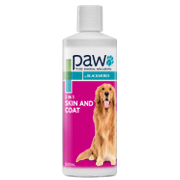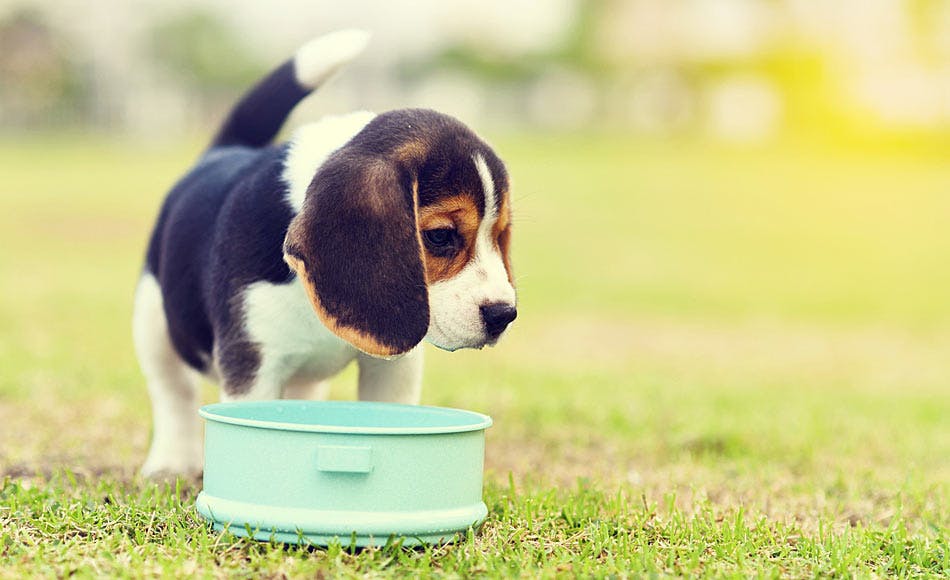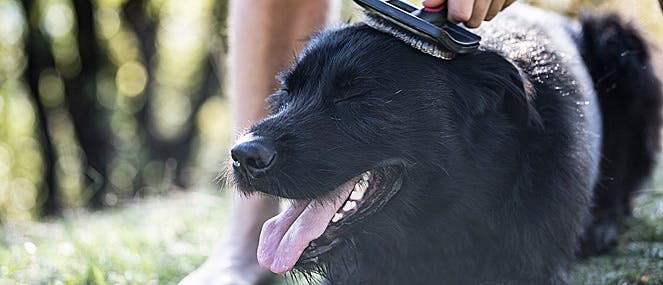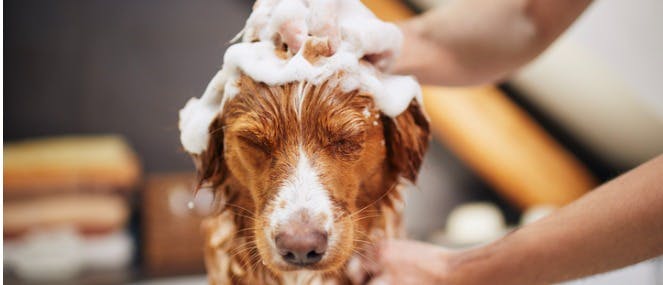
- A Guide To Perfect Your Pet's Health/
- Choose the Right Products to Groom Your Dog/
- How to properly cut your dog’s nails
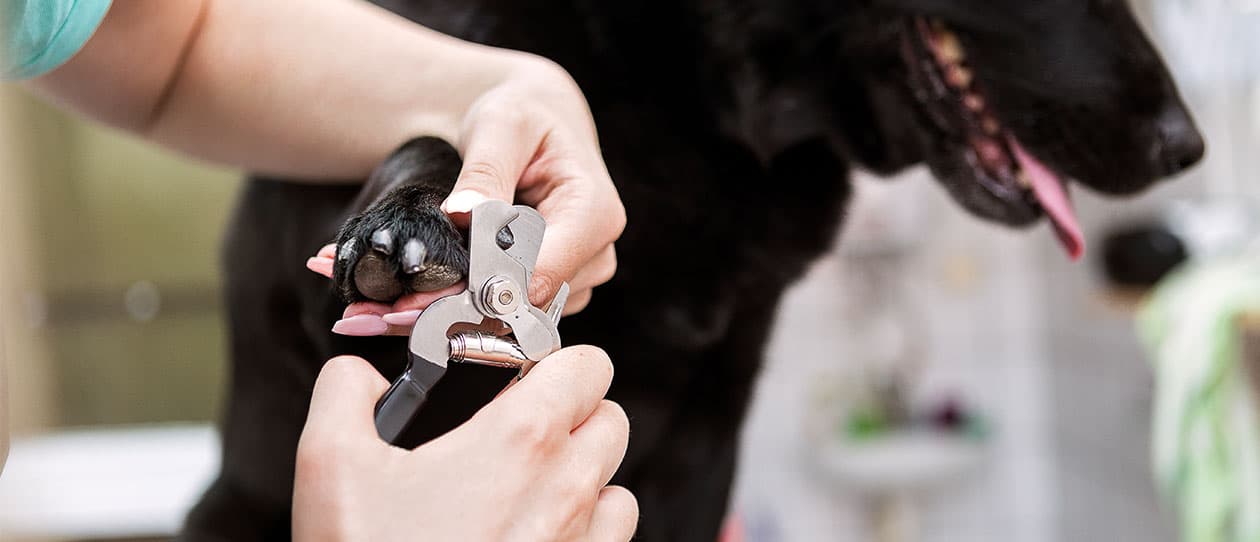

If you can hear your dog ‘click clack’ down the pavement, chances are it’s time to get their nails cut. This is not only for your sake – think of your furniture, skin and clothes – but also for the health of your pet.
Some dogs wear down their nails naturally when walking on rough surfaces, but often this is not enough to keep length in check, and periodic trimming is still necessary. Overly long nails are prone to breaking and chipping and can cause pain if they start to curl into your dog’s paw pads. Torn nails can also damage the cuticle, and raw skin here is prone to infection. If it gets to this stage, your dog may alter their gait to ease the pain of the nail – in turn potentially injuring another part of their body or leading to joint pain and arthritis.
Professional dog groomers are adept at clipping while keeping your dog calm, but if you follow a few simple steps and have the right equipment on hand, it’s easy to give your pooch a manicure at home as well.
What do I need to cut my dog's nails?
There are only a few essentials you need on hand when cutting your dog’s nails:
Dogs have tough, thick nails that require specialised clippers – don’t use your own scissors or clippers on your pooch, as you might end up breaking their nails, rather than cutting them.
The type of clippers you need will depend on the size of your dog, the thickness of their nails and also the nail colour – pigmented or clear.
Scissor Clippers: Best for bigger dogs
Similar to normal scissors, except with shorter, sturdier blades. You squeeze the blades together around your dog’s nail.
Guillotine Clippers: Best for small dogs
Insert your dog’s nail into the loop, and squeeze until the blade severs it.
Plier Clippers: Best for most dogs
Resembling toolbox pliers with sharp pincers, these clippers come with a spring near the blade for added strength.
Grinder: Best for dogs with pigmented nails
These slowly and gently file your dog’s nails down to a suitable length. Ideal if you’re a beginner groomer or can’t see your dog’s quick, as they provide more control. They also act as a nail file, eliminating sharp edges.
How to cut my dog's nails if you're using clippers:
If you’re using clippers, let your dog become familiar with them – the sound they make, their smell – before you get to work. Give your pet treats when you pull the equipment out. Then:
Step 1: Find a quiet area, free from distractions, and place your dog on a bench or table. This way, you’re at the same height as them, making it easier to clip and comfort them, and making it harder for them to squirm and get away. You’ll want them standing or lying on their side when clipping back paws and sitting or lying on their side when doing the front.
Step 2: Gently but firmly hold your dog’s foot between your thumb and forefinger and centre your grip on the paw. Use your thumb to isolate the nail you want to cut and ensure there’s no fur blocking your view of the entire nail.
Step 3: Identify the quick. This is a blood vessel and a nerve, and nicking it will not only lead to bleeding, but will also be painful for your pooch. If your dog has clear nails, it’s easy to see where this fleshy, pink part of the nail begins. But if your dog has pigmented nails, it can be trickier – try looking at the underside of your dog’s nail and identify the hollow side toward the tip. This is where you should focus on clipping. Worst case, revert to using a grinder.
Step 4: Place the blade away from the quick, in a hollow part of the nail, and use a firm, steady motion to cut the nail. Repeat.
Step 5: Use your nail file to smooth out any rough edges.
Make sure you also cut your dog’s dew claws (those on the side and away from the paw), if they have them, as these nails do not touch the ground and do not wear down naturally.
If you're using a grinder:
If you’re using a grinder, again make sure your pet is comfortable with the noise – run it beside them the day before you plan to do the clip. Then:
Step A: If your dog has long hair, trim the hair around the paw and nails so it doesn’t get caught in the grinder.
Step B: Repeat steps 1 – 3 above.
Step C: Start the grinder on a low speed on top of a nail for a couple of seconds. Repeat on other nails.
Step D: If your dog is calm, take the grinder to a higher speed and repeat the filing process for a few seconds on each nail.
Step E: When the nails are a length above the quick (look for a white circle starting to appear on pigmented nails), smooth them out and get rid of rough edges.
How not to scare my dog when cutting their nails
Most dogs are not keen on having their nails clipped. Like all things related to your pet’s behaviour, their response and reaction comes down to training and positive reinforcement.
Get them used to clipping or grinding, as well as ensuring their feet are regularly touched, from a young age – you may like to reinforce the concept of paw holding a few days before you plan to cut their nails. For first timers, it’s a good idea to have two people involved – one to do the clipping, the other to do the holding, comforting and treat giving.
How often should I cut my dog's nails?
The answer to this question depends on how fast your dog’s nails grow and how active your pet is. Most dogs need a trim every month or so – if their nails touch the ground, it’s time for a cut. But if you carry your dog everywhere, and their nails don’t have the chance to get worn down on the pavement, you may need a more regular trim.
Key summary:
- To make nail clipping easier, it’s a good idea to get your dog used to having their paws touched from a young age
- Most dogs need their nails clipped every month or so
- There are different types of nail clippers available – don’t use human nail scissors
- Let your dog become familiar with the sound and smell of clippers before you use them
- Know how to identify the quick in your dog’s nail, and avoid clipping it
- Keep treats on hand!

